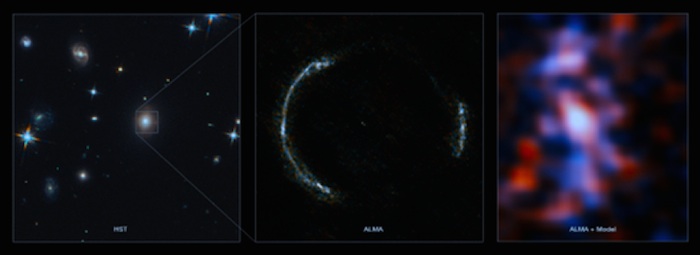.

Data refute mainstream theory on the birth of galaxies
Using an “intuitive” approach, a SISSA study confirms a recent hypothesis on the formation of galaxies, according to which the larger elliptical galaxies formed in very ancient times through a process of local (in situ) star formation. This contradicts the current paradigm that they formed through the merging of spiral galaxies, a view which, despite being generally accepted by most of the scientific community, has been a source of theoretical inconsistencies. The study supports the in situ hypothesis, already proposed with theoretical models, basing itself only on the analysis and interpolation of new data collected by the Herschel instrument (in the infrared) integrated with Hubble data (in the ultraviolet), an innovative yet simple method. The study has been published in The Astrophysical Journal.
It all starts from a problem with dust: galaxies with the highest rates of star formation are also the “dustiest”, because the violent process of star formation produces gas and heavy molecules. This means that part of the electromagnetic radiation emitted by nascent stars cannot be recorded by the instruments for astronomical observation in the optical and the ultraviolet band, as it is absorbed by dust and gas and re-emitted in the infrared. On top of this, owing to instrument limitations it is even difficult to observe this infrared radiation in the case of very distant, older galaxies. All this complicates things for astrophysicists investigating stellar and galaxy formation, and all studies to date have mostly proposed predictions based on purely theoretical models.
Claudia Mancuso, PhD student under the supervision of Andrea Lapi and Luigi Danese, SISSA professors in the astrophysics group and co-authors of the study, did the opposite: “we started from the data, available in complete form only for the closer galaxies and in incomplete form for the more distant ones, and we filled the ‘gaps’ by interpreting and extending the data based on a scenario we devised” comments Mancuso. The analysis also took into account the phenomenon of gravitational lensing, which allows us to observe very distant galaxies belonging to ancient cosmic epochs.
In this “direct” manner (i.e., model-independent) the SISSA group obtained an image of the evolution of galaxies even in very ancient epochs (close, in a cosmic timescale, to the epoch of reionization). This reconstruction demonstrates that elliptical galaxies cannot have formed through the merging of other galaxies, “simply because there wasn’t enough time to accumulate the large quantity of stars seen in these galaxies through these processes”, comments Mancuso. “This means that the formation of elliptical galaxies occurs through internal, in situ processes of star formation.
“These findings”, states Mancuso, “will constitute a necessary starting point for building the future generation of models and numerical simulations and, more importantly, they will provide an unprecedented basis for identifying primordial galaxies in the next generation surveys in the ultraviolet with the future James Webb Space Telescope (JWST), in the millimeter band with the Atacama Large Millimeter Array (ALMA), and in the radio band with the Square Kilometer Array (SKA) interferometer”.
Quelle: SISSA, 34136 Trieste
4516 Views
